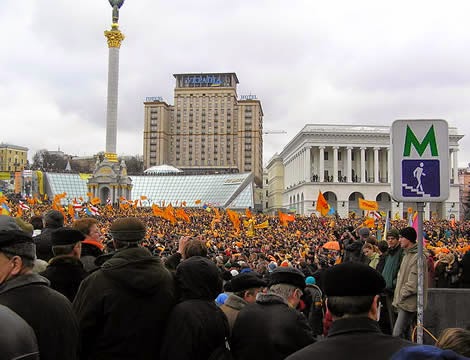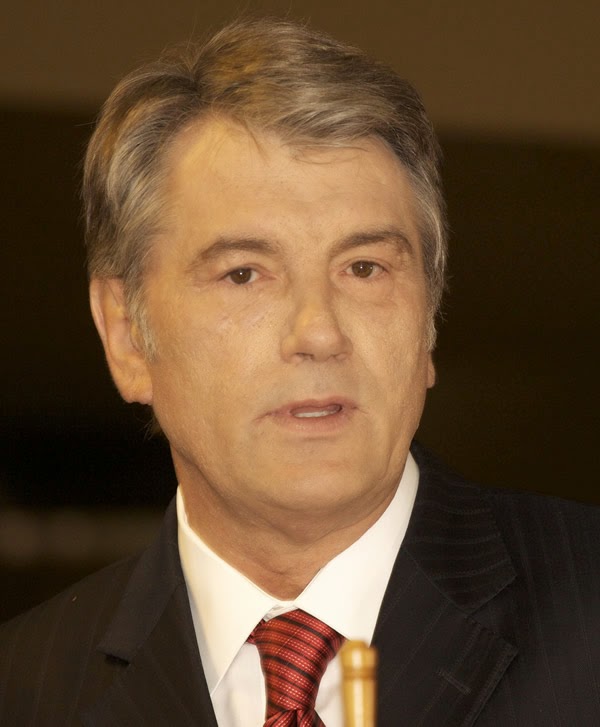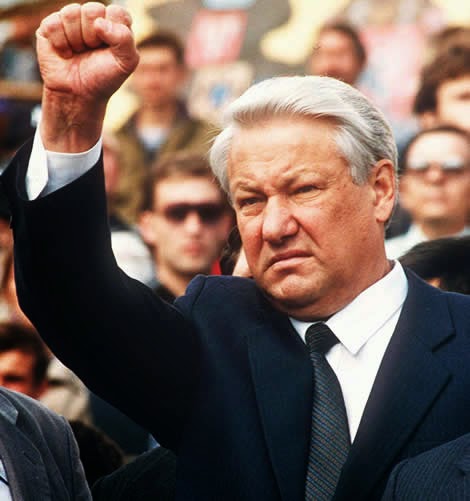In 1989 eastern European countries of the Warsaw Pact, which had been beholden to the Soviet Union since the end of World War II, had their communist governments replaced with noncommunist governments. For the first time in over 30 years the borders between eastern and western Europe were opened.
The following year the Congress of People’s Deputies changed the Soviet constitution and removed the Communist Party’s monopoly from the constitution by allowing multiple parties. In March the Baltic States held elections and their national independence parties gained majorities in each of the republics. At this time Lithuania decided to declare its independence from the Soviet Union, the first republic to do so.
In June 1990 Russia declared its right to rule itself separate from the Communist Party of the Soviet Union. During the remainder of the summer the other republics also declared their right to self-rule. Mikhail Gorbachev tried to find a way to salvage the Soviet Union.
 |
His efforts were to be put to a vote in August 1991, but hard-line communists launched an unsuccessful coup in Moscow. The failed coup brought the Communist Party down, and none of the republics was interested in trying to save the Soviet Union. On Christmas Day 1991 Gorbachev resigned, ending the Soviet Union.
Throughout 1989 Poland, East Germany, Hungary, Czechoslovakia, Romania, and Bulgaria, which had been under Soviet control since the end of World War II, established democratic governments and cut their ties with the Soviet Union.
Seeing these events, the Baltic countries started to voice their desire to be free of the Soviet Union also. The Baltic countries had been absorbed by the Soviet Union as part of a treaty (the Nazi-Soviet Pact) it had made with Nazi Germany in 1939.
Gorbachev did not care how a republic had come to be part of the Soviet Union; in his view none of the republics should be allowed to leave the Soviet Union. Seeing the events in eastern Europe only encouraged the Baltic republics. Attempts to buy off the republics with token freedoms only encouraged them to continue to push for separation from the Soviet Union.
Following the Baltic republics’ lead was the Moldavian Republic. Originally part of Romania, Moldavia was given to the Soviet Union as part of the Nazi-Soviet Pact. Independence movements also appeared in the Trans-Caucasian region of the Soviet Union, made up of the republics of Georgia, Armenia, and Azerbaijan.
In Armenia and Azerbaijan, the growth in nationalistic parties also led to a dispute between them over the Nagorno-Karabakh region. In Georgia, the massacre of female protesters in the capital of Tbilisi in April 1989 only fueled the desire to be free of the Soviet Union.
In early February 1990, the Communist Party’s Central Committee met to consider a draft anjuran to allow multiple parties. The congress also created the office of the president of the Soviet Union and elected Gorbachev to the office.
After the congress, in April, Gorbachev announced the Law of Secession, which laid out the process that the republics would have to follow in order to gain their independence. The process was long and drawn out.
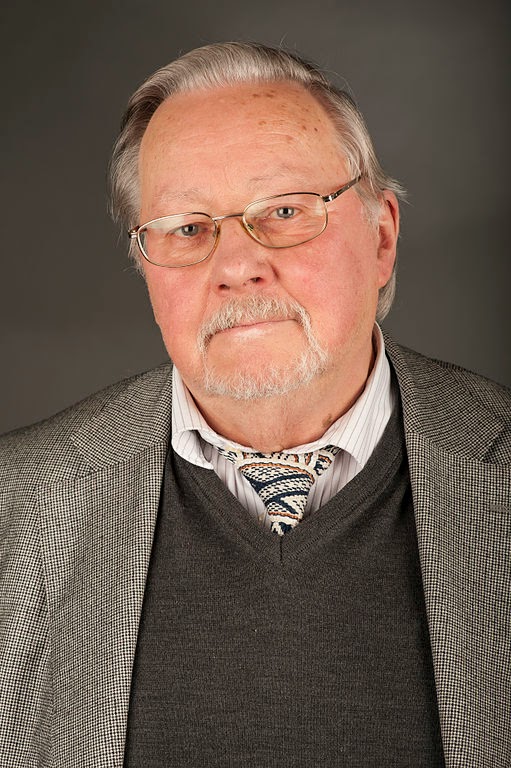 |
| Lithuanian president: Vytautas Landsbergis |
One of the first uses of the law was to pressure Lithuania to do as the Soviet government said or face the consequences. Lithuanian president Vytautas Landsbergis refused, saying that a foreign power had no right to make decisions about how his country should be run. On April 18, the Soviet government started an economic blockade of Lithuania.
The Soviets lifted the blockade on June 29 when the Lithuanian parliament suspended the independence decree. Latvia (May 4) and Estonia (May 8) followed Lithuania’s lead, and even though Gorbachev outlawed their decrees, they did not suffer the blockade as Lithuania did.
The Baltic republics were not the only ones moving toward independence. In Russia, the Russian Supreme Soviet elected Boris Yeltsin as chairman on May 29. Running against 13 other candidates, Yeltsin introduced a platform that pushed for Russian sovereignty in the Soviet Union, making Russian law take precedent over Soviet law; provided for multiparty democracy; and declared that Russia should conduct its own foreign policy with all other countries, including other republics of the Soviet Union. The actual declaration came on June 12, 1990, at which time Russia also declared its right to control the natural resources of its country. Other republics followed suit.
Through the end of 1990 Lithuania continued to try to work out a deal with the Soviet government, but the Soviets continued to stall. Therefore, on January 2, 1991, Landsbergis withdrew the suspension of the independence decree. In response to this action, paramilitary police in Vilnius (the capital of Lithuania) and Riga (the capital of Latvia) seized various buildings.
Then on January 7 the Soviet Ministry of Defense ordered troops into all three of the Baltic States as well as Moldavia, Georgia, and the Ukraine. The Soviet military continued to occupy buildings belonging to the Lithuanian government, and on January 13 it attacked the capital’s television center and in the process killed 14 people and wounded over 200.
At about the same time, Gorbachev was telling the Soviet government that force would not be used against the people of Lithuania. These contradictory actions and talk hurt Gorbachev, who claimed not to have had any advanced knowledge of what the military was going to do.
A few days later, on January 20, violence broke out in Latvia when Soviet paramilitary police stormed a government building in Latvia and killed two local police officers. The Baltic republics gained support from Russia when Yeltsin signed a document recognizing the independence of the Baltic States on behalf of Russia, which was exerting its right to conduct its own foreign policy separate from that of the Soviet Union.
Although the Baltic republics had started out leading the move toward independence from the Soviet Union, Russia now began to take a more prominent role. In January 1991 Gorbachev issued a decree that the Soviet army was to patrol the streets of the larger cities in the Soviet Union to help stop crime and control protests; Russia objected.
When Yeltsin attacked Gorbachev during a television interview, Yeltsin found himself under attack by various groups. Although Gorbachev’s actions might be decidedly anti-independence for the republics, he still had the support of many of the people in the Soviet Union and Western countries.
On March 17, 1991, the idea of maintaining a union of the republics was put to a vote of the people of the Soviet Union. The vote passed, although six of the republics (Lithuania, Latvia, Estonia, Armenia, Georgia, and Moldavia) did not participate in the referendum since they claimed that they were not part of the Soviet Union.
Yeltsin claimed that the referendum was nothing more then an attempt by Gorbachev to generate support for his leadership. Gorbachev then called a conference and invited Yeltsin and the presidents of eight other republics to talk about a anjuran for a new Union Treaty and new Union Constitution. Gorbachev and the other presidents signed a declaration supporting the drafting of a new treaty and constitution.
May saw more changes as the republics continued to move away from the Soviet Union. On May 5 the Russian branch of the KGB separated itself from the Soviet Union’s institution. Moldavia changed its official name to the Moldavian Republic, dropping the words Soviet and Socialist. Then on May 26 Georgia had its first-ever direct presidential election.
The Coup
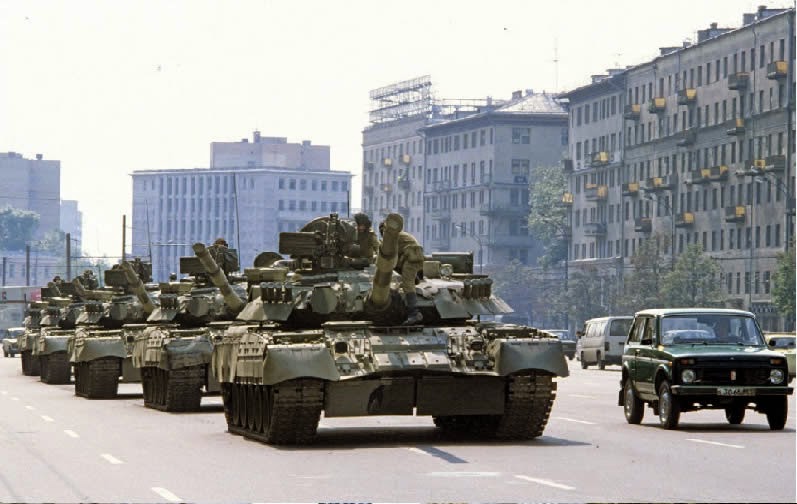 |
| Coup to remove Gorbachev from power (1) |
Gorbachev and Yeltsin continued to work out the details of the new Union Treaty. The treaty would keep the Soviet Union alive, but would limit the areas over which it could exercise control and make participation in the union voluntary. Before the treaty was enacted, a group of hard-line communists launched a coup to remove Gorbachev from power. The coup lasted for only three days.
The committee in charge of the coup announced a state of emergency and placed Gorbachev under house arrest, cutting off his ability to communicate with the outside world. They then tried to get him to sign a decree declaring a state of emergency, but he refused. With Gorbachev’s refusal to cooperate, the coup started to come unraveled.
The plotters had planned to arrest Yeltsin also, but missed their chance. Instead, Yeltsin went to the Russian Parliament building and appealed to the citizens of Moscow to ignore the unlawful coup. The military was unwilling to move against the civilians, and the coup ended on August 21.
Gorbachev returned to Moscow. Because of the coup, Yeltsin became the satria of the hour, and his popularity grew rapidly. Unfortunately for Gorbachev, his popularity plummeted and accelerated the decline of the Soviet Union. Yeltsin forced Gorbachev to return control of the natural resources and enterprises on Russian territory back to Russia from the Soviet Union.
 |
| Coup to remove Gorbachev from power (2) |
December saw the Soviet Union brought to an end. On December 1 the Ukraine held a referendum to allow the people to vote in support of or against the declaration of independence from the Soviet Union. The referendum passed by a wide margin.
Then the leaders of Russia, the Ukraine, and Belarus met to determine the future of the Soviet Union and their republics. On December 8 they announced the end of the Soviet Union and the creation of a Commonwealth of Independent States (CIS). Membership in the CIS was open to all former members of the Soviet Union and any other state interested in joining.
On December 12 Kazakhstan, Kyrgyzstan, Tajikistan, and Turkmenistan joined the CIS. More meetings were held on December 21, and Moldavia, Azerbaijan, and Armenia joined. During this meeting the republics agreed to abolish the position of president of the Soviet Union.
Gorbachev still held the position, but on December 25, he announced his resignation. With Gorbachev’s resignation the remaining members of the Soviet Parliament had the Soviet flag removed from the Kremlin, and at midnight on December 31, 1991, the Soviet Union ceased to exist.





